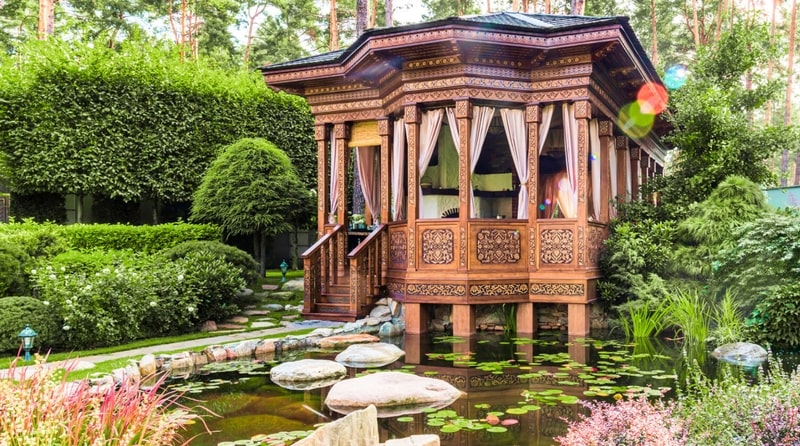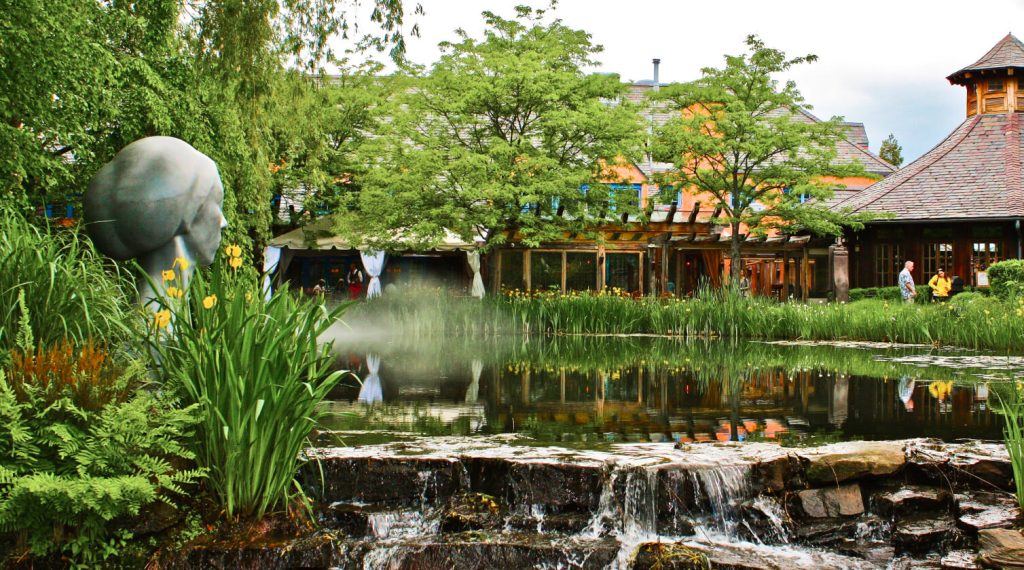Building a koi pond can be a wonderful addition to your outdoor space, providing a serene and peaceful atmosphere for relaxation and enjoyment. Not only are koi ponds aesthetically pleasing, but they also provide a unique habitat for koi fish and other aquatic plants. With this easy-to-follow step-by-step tutorial, you can create a stunning koi pond that will bring joy and serenity to your life.
Step 1: Choose the Perfect Location
When building a koi pond, the location is crucial. Choose a spot that receives partial shade, as direct sunlight can cause algae growth and water temperature fluctuations. Avoid areas with high foot traffic, as this can disturb the fish and the ecosystem.
Consider the following factors when selecting a location:
- Proximity to a power source for the pump and filtration system
- Accessibility for maintenance and upkeep
- Aesthetics – consider the view from the surrounding area and the overall visual appeal
Step 2: Determine the Size and Shape of Your Pond
The size and shape of your pond will depend on several factors, including:
- Space availability
- Budget
- Number of fish and plants you plan to keep
- Personal preference
As a general rule, a pond with a minimum size of 4 x 6 feet and a depth of at least 3 feet is recommended. This will provide enough space for the fish to swim and thrive.
Step 3: Dig the Pond
Digging the pond is the most physically demanding part of the process. You can either:
- Hire a professional to dig the pond for you
- Rent a backhoe or excavator to dig the pond yourself
- Dig the pond by hand with a shovel (not recommended)
If you decide to dig the pond by hand, make sure to:
- Mark out the pond area with a rope or hose to define the shape
- Dig the pond gradually, working in sections to avoid fatigue
- Use a level to ensure the pond is even and level
Step 4: Line the Pond
The liner is a durable, waterproof material that lines the pond and prevents leaks. There are several types of liners available, including:
- PVC liner: a popular choice for koi ponds, as it is durable and easy to install
- EPDM liner: a more expensive option, but it is more flexible and can be used for more complex pond designs
- Concrete liner: a more permanent solution that requires a concrete shell to be built around the pond
Step 5: Install the Pump and Filtration System
A good pump and filtration system is essential for maintaining healthy water and a thriving ecosystem. Choose a pump that is suitable for the size of your pond and the number of fish and plants you plan to keep.
Popular options include:
- Submersible pumps: easy to install and maintain
- External pumps: more expensive, but they can provide better filtration and circulation
- Biofiltration systems: designed to maintain healthy bacteria levels and improve water quality
Step 6: Add a Skimmer
A skimmer is a vital component of the pond ecosystem, as it helps to remove debris and waste from the surface of the water. There are two types of skimmers available:
- Automatic skimmers: designed to skim the surface of the water continuously
- Manual skimmers: require you to manually remove debris from the surface of the water
Step 7: Add Gravel and Decorations
Gravel and decorations can enhance the visual appeal of your pond and provide a habitat for aquatic plants and fish.
Choose gravel that is suitable for aquatic use
Add decorative rocks, plants, and ornaments to create a beautiful and peaceful atmosphere
Step 8: Install the Heating System (Optional)
If you live in a cold climate, you may need to install a heating system to keep the water at a stable temperature. Popular options include:
- Electric heaters: easy to install and maintain
- Solar heaters: a more environmentally friendly option that uses solar energy to heat the water
- Gas heaters: more expensive, but they can provide better heating and circulation
Step 9: Introduce the Fish and Plants
Once the pond is complete, you can introduce the fish and plants.
Choose healthy, disease-free koi fish that are suitable for your pond size and climate
Introduce plants that are aquatic and provide a habitat for the fish
Tips and Considerations
Regular maintenance is crucial to keep the pond healthy and thriving
Monitor water levels, temperature, and chemistry to ensure the health and well-being of the fish and plants
Avoid overstocking the pond, as this can lead to water quality issues and stress on the fish
By following these steps and considering the tips and considerations outlined above, you can create a stunning koi pond that will provide years of enjoyment and relaxation.
Latest articles
The Importance of Lighting in Outdoor Landscaping
- Fountains
- October 7, 2024
Opening your pool: Steps to start your year off right
- Landscaping
- April 30, 2024



